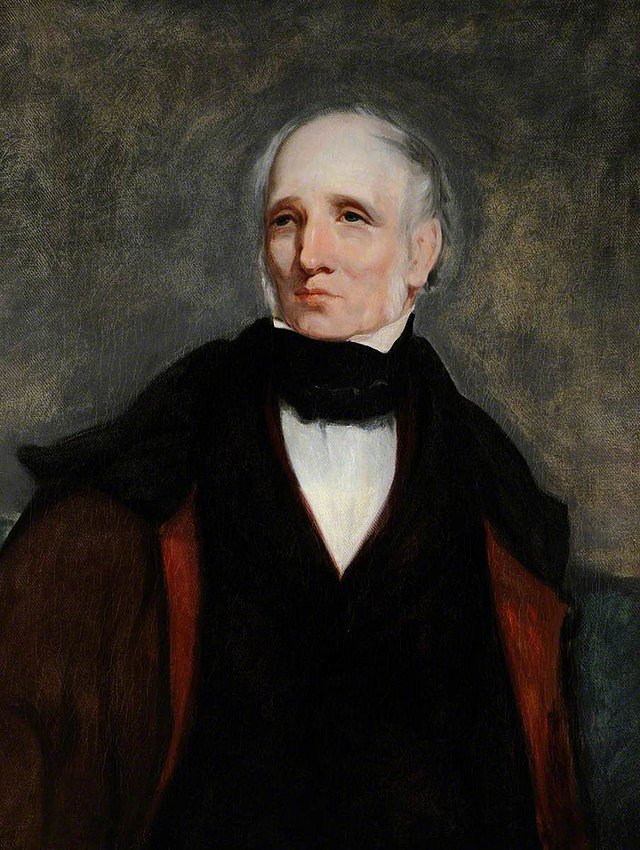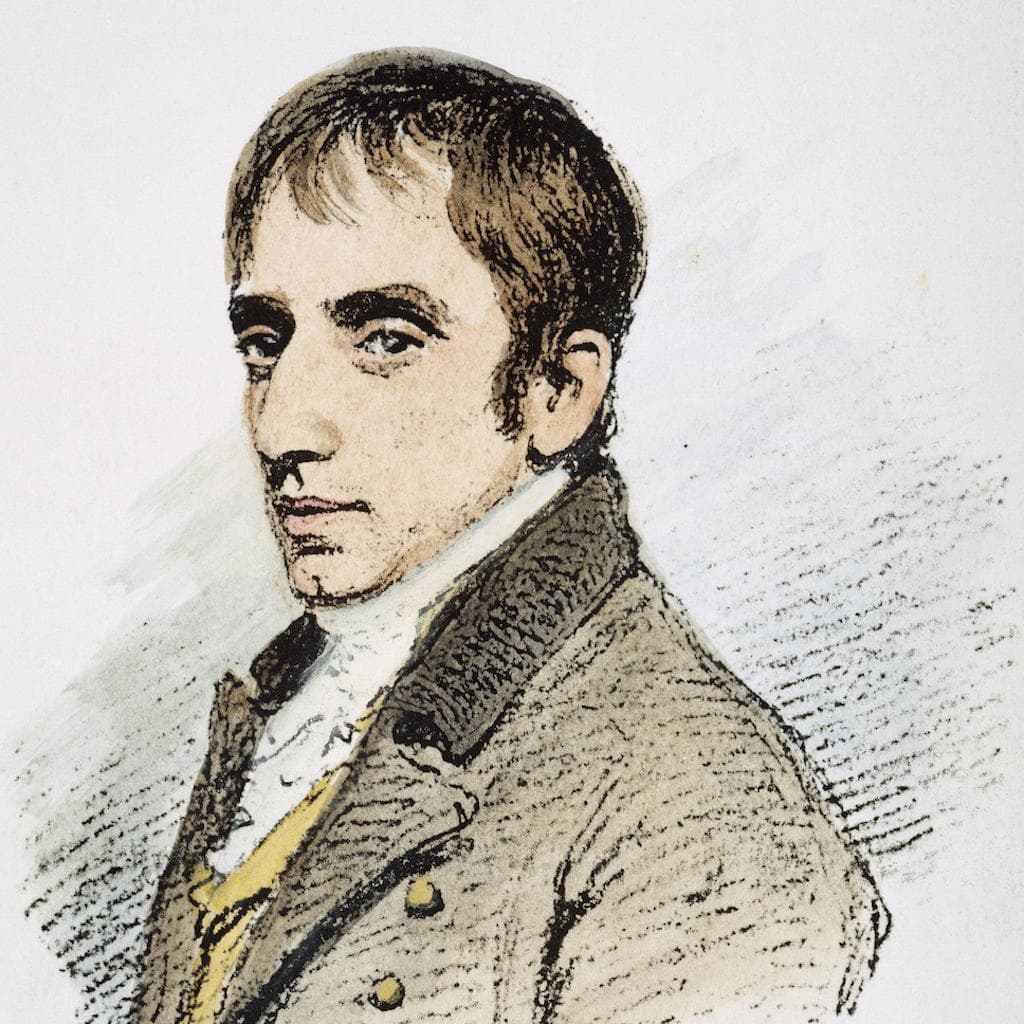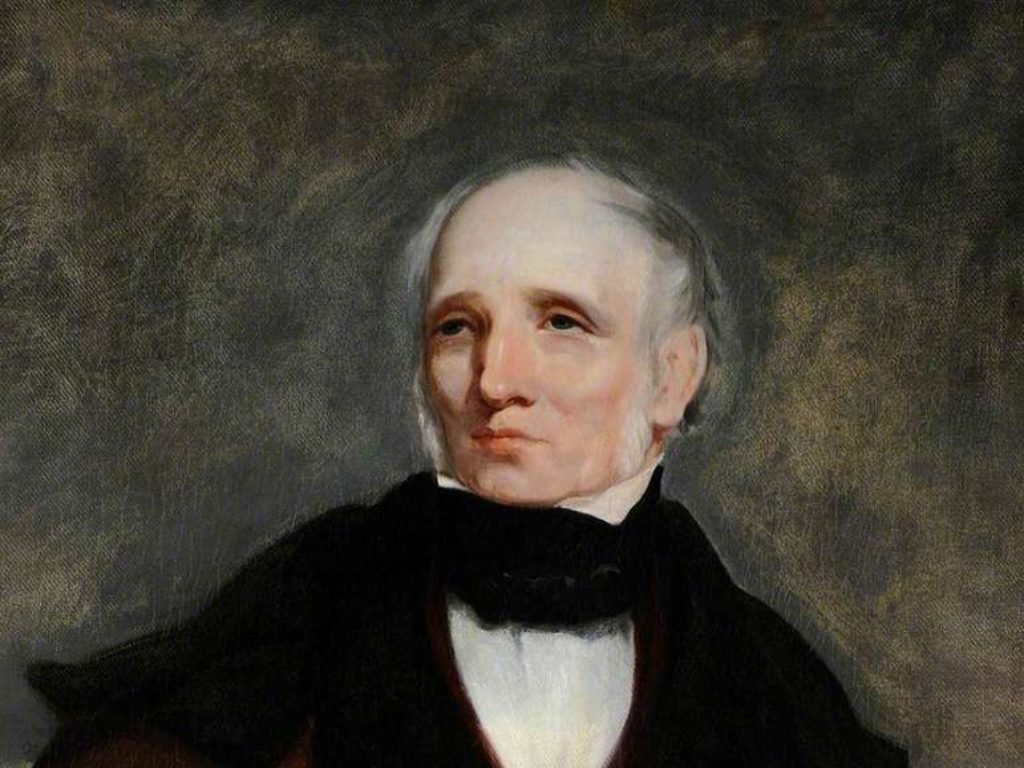William Wordsworth remains a celebrated figure in English literature. His works continue to inspire readers worldwide.
Known as a pioneering Romantic poet, Wordsworth’s verses vividly capture nature’s beauty. His poetry reflects deep emotions and profound thoughts. Born in 1770, he experienced an era of change. Wordsworth’s writings offer a window into human feelings. His famous works include “I Wandered Lonely as a Cloud” and “Tintern Abbey.
” He often explored themes of nature, beauty, and the human spirit. By appreciating his works, readers gain insight into a simpler, more reflective time. Wordsworth’s influence on literature and culture endures to this day. His legacy invites us to pause and appreciate the world around us. Dive into his life and explore the timeless appeal of his poetry.
Early Life And Influences
William Wordsworth, one of the most prominent poets, had a profound early life. His poetry reflects his childhood experiences and the influences that shaped him. Understanding Wordsworth’s early years helps to appreciate his literary works.
Family Background
William Wordsworth was born in Cockermouth, England, in 1770. His family played a crucial role in his upbringing. His father, John Wordsworth, was an attorney and his mother, Ann Cookson Wordsworth, died when he was eight. This loss deeply affected him. He had four siblings, including his sister Dorothy. Dorothy became his lifelong friend and confidante. Their bond influenced his literary career.
Education And Mentors
Wordsworth attended the Hawkshead Grammar School. This school nurtured his love for literature. He later studied at St. John’s College, Cambridge. His time there exposed him to diverse ideas. During his studies, he met influential figures. One of them was Samuel Taylor Coleridge, a fellow poet. Coleridge became a close friend and collaborator. Their friendship was pivotal in Wordsworth’s poetic journey.
Romantic Movement
The Romantic Movement emerged in the late 18th century. It was a reaction to the Industrial Revolution. Artists and writers focused on emotion and nature. This era valued imagination over reason. It celebrated the beauty of the natural world. Romanticism sought to capture the sublime and spiritual essence of life. It brought a new perspective to literature and art.
Defining Characteristics
Romanticism emphasized strong emotions and individualism. It appreciated nature’s beauty and power. The movement rebelled against structured forms and norms. Romantic poets often used vivid imagery and metaphor. They explored themes of love, beauty, and the passage of time. The movement highlighted the struggles of common people. It also cherished the idea of the hero.
Wordsworth’s Role
William Wordsworth was a key figure in Romanticism. He focused on nature and the human spirit. Wordsworth believed in the healing power of nature. His poetry often explored personal experiences and emotions. He co-authored “Lyrical Ballads” with Samuel Coleridge. This work marked a turning point in English poetry. Wordsworth’s simple language appealed to everyday people. His work inspired future generations of poets and writers.
Nature As Inspiration
William Wordsworth found profound inspiration in nature’s beauty and serenity. His poetry captures landscapes with vivid imagery and emotional depth. Nature served as a muse, guiding Wordsworth’s exploration of human emotions and life’s complexities.
Nature has always been a powerful source of inspiration for poets, and William Wordsworth stands as a testament to this connection. His work reflects a deep admiration and respect for the natural world, intertwining his personal experiences with vivid imagery of landscapes and seasons. If you’ve ever taken a walk in nature and felt a sense of peace or creativity, you’ll find a kindred spirit in Wordsworth.
Connection To The Lake District
Wordsworth’s bond with the Lake District was profound. He lived in this beautiful region of England for much of his life, drawing endless inspiration from its stunning vistas. Imagine standing on the shores of Ullswater, feeling the cool breeze and watching the gentle ripples on the water.
The Lake District wasn’t just a backdrop for Wordsworth; it was a living, breathing character in his poetry. It’s like having a favorite café where your thoughts flow effortlessly. Have you found a place that sparks your creativity?
Nature In His Poetry
Wordsworth’s poetry often paints vivid pictures of nature. In “I Wandered Lonely as a Cloud,” he captures the beauty of daffodils dancing in the breeze. These aren’t just flowers; they are symbols of joy and tranquility.
Nature, for Wordsworth, was a teacher and a healer. His poem “Lines Written a Few Miles above Tintern Abbey” reflects on how nature offers wisdom and comfort. Next time you read Wordsworth, pay attention to how he uses nature to express emotions. How does nature inspire you in your own life?
Wordsworth’s work encourages us to look at nature not just as scenery, but as a source of inspiration and reflection. His poetry invites you to slow down and notice the small details. Next time you’re outside, take a moment to observe your surroundings. You might just find the inspiration you’ve been looking for.
Major Works
William Wordsworth, a towering figure in English literature, has left a lasting mark through his major works. Each piece reflects his deep connection with nature and human emotions. As you explore his writings, you might find yourself reflecting on your own experiences with nature and life. Could Wordsworth’s insights offer you a new perspective?
Lyrical Ballads
Lyrical Ballads is a collaboration between Wordsworth and Samuel Taylor Coleridge. This work is often seen as a cornerstone of Romantic poetry. It includes poems that challenge traditional poetic norms by focusing on ordinary people and everyday language.
Consider the poem “The Idiot Boy.” It tells the story of a mother’s love and anxiety for her son. Wordsworth’s simple yet profound language makes you think about the power of parental love. It’s not just about the words; it’s about the emotions they stir.
Another impactful poem is “Lines Written a Few Miles Above Tintern Abbey.” Here, Wordsworth reflects on nature’s ability to inspire and heal. Have you ever felt recharged after a walk in the woods? This poem might resonate with those moments.
The Prelude
The Prelude is Wordsworth’s autobiographical masterpiece. It offers a glimpse into his mind and soul as he navigates life’s challenges. This extensive poem was never intended for public release during his lifetime, making it a personal and intimate work.
The poem explores themes of growth and self-discovery. Wordsworth’s reflections on his childhood and youth prompt you to consider your own journey. What memories shape your identity today?
One striking aspect is Wordsworth’s exploration of nature’s influence on his development. He often found solace and inspiration in the natural world. Think about the places that have shaped your thoughts and feelings. How do they impact your daily life?
Through these major works, Wordsworth invites you to experience poetry in a new way. His words challenge you to connect deeply with the world around you. As you read, ask yourself: What emotions and thoughts do these poems awaken within you?
Themes In Wordsworth’s Poetry
William Wordsworth, a pioneer of Romantic poetry, celebrated nature’s beauty and simplicity. His works often explore deep connections between humans and the natural world. Wordsworth’s themes resonate with readers, offering insights into life and emotion. Let’s explore some key themes in Wordsworth’s poetry.
Simplicity And Beauty
Wordsworth believed in the power of simplicity. His poems often reflect everyday life and nature’s simple beauty. He found inspiration in common scenes like fields and rivers. Wordsworth’s language is straightforward, yet deeply moving. This simplicity allows readers to connect with his work easily.
Human Emotion And Nature
Wordsworth saw a strong link between human emotion and nature. He believed nature could heal and comfort the human soul. His poetry often describes feelings of joy, peace, and introspection. Nature, for Wordsworth, mirrored human emotions and experiences. This theme made his work relatable and timeless.

Credit: en.wikipedia.org
Collaborations And Relationships
William Wordsworth’s journey was shaped by his collaborations and relationships. His poetic voice found strength through meaningful partnerships. These connections nurtured his creativity and enriched his life. Wordsworth’s interactions with others left an indelible mark on his work.
Partnership With Coleridge
Wordsworth’s partnership with Samuel Taylor Coleridge proved significant. Their friendship began in the late 1790s. Together, they crafted “Lyrical Ballads,” published in 1798. This work marked a pivotal moment in English literature. The collection introduced readers to Romantic poetry. Wordsworth’s connection with Coleridge was deep and inspiring. They shared ideas and explored new poetic themes. Their collaboration encouraged a fresh style of writing. Both poets valued nature and human emotions. This shared passion unified their creative efforts. Coleridge’s influence on Wordsworth was profound. It pushed Wordsworth to explore deeper themes in his poetry.
Impact Of Dorothy Wordsworth
Wordsworth’s relationship with his sister, Dorothy, was equally important. Dorothy was not only his sibling but also his muse. Her journals provided vivid descriptions of nature. These writings inspired many of Wordsworth’s poems. Dorothy’s observations added depth to his work. Her presence offered comfort and stability. Wordsworth often relied on her insights and perspectives. Dorothy’s influence extended beyond mere inspiration. She played a crucial role in his personal life. Her support helped Wordsworth navigate life’s challenges. Together, they shared a deep bond that fueled his creativity. Dorothy’s impact on Wordsworth’s poetry remains undeniable.
Legacy And Influence
William Wordsworth remains a monumental figure in literature. His work continues to captivate readers worldwide. His poems, rich with emotion and nature, have left a lasting impact. Wordsworth’s legacy is profound, influencing countless poets and readers. His innovative style shaped the direction of English poetry. Let’s explore his enduring influence on future generations.
Impact On Future Poets
Wordsworth’s poetry inspired many future poets. He championed simple, everyday language in poetry. This approach broke away from traditional poetic norms. Many poets adopted his style, valuing emotion over formality. His work encouraged poets to explore personal experiences. Poets like Coleridge and Keats admired his groundbreaking style.
Wordsworth’s focus on nature also influenced poets. He depicted nature as a source of inspiration and reflection. Future poets embraced this theme, connecting with nature in new ways. His influence extended beyond his time, shaping poetic expression for generations.
Enduring Popularity
Wordsworth’s poetry remains popular today. His works resonate with readers of all ages. Many find solace in his descriptions of nature and life. His poems evoke deep emotions, connecting with readers on a personal level. Schools and universities often study his work, keeping his legacy alive.
Wordsworth’s themes of nature, beauty, and humanity are timeless. They continue to inspire readers and poets alike. His poetry offers insights into human emotions and the natural world. This timeless quality ensures Wordsworth’s place in literary history.

Credit: wordsworth-editions.com
Criticism And Controversy
William Wordsworth faced criticism for his focus on nature and emotion over traditional poetic forms. Some critics argued his work lacked intellectual depth and complexity. Despite this, his influence on Romantic poetry remains undeniable, challenging the conventions of his time.
William Wordsworth, a central figure in English literature, was not immune to criticism and controversy. His revolutionary style often challenged the norms of his time. Despite his lasting impact, Wordsworth faced both praise and skepticism, creating a lively debate around his work that continues today.
Challenges In His Era
During Wordsworth’s time, poetry was expected to follow strict rules and formal structures. Wordsworth broke these conventions, embracing simplicity and the beauty of nature.
His focus on everyday language was a radical departure from the ornate style popular among his contemporaries. Critics argued his poems lacked the grandeur and sophistication of traditional works.
Despite this criticism, Wordsworth believed in the power of authentic emotion and personal experience. He wanted poetry to be accessible to everyone, not just the elite. This bold stance provoked intense debate among literary circles.
Modern Perspectives
Today, Wordsworth is celebrated for his pioneering spirit. Critics now recognize the genius behind his approach. His emphasis on nature and emotion resonates in modern times.
Many readers appreciate his ability to capture the beauty in the mundane. Wordsworth’s work invites us to pause and reflect on our surroundings, fostering a deeper connection with the world.
But what can we learn from the controversy surrounding his poetry? It reminds us to question established norms and embrace innovation. Wordsworth’s legacy encourages us to appreciate simplicity and authenticity in our own creative endeavors.
How do you perceive Wordsworth’s influence in today’s world? Do his themes of nature and emotion still hold relevance in your life? These questions invite a personal exploration of Wordsworth’s lasting impact.
FAQs
What Was William Wordsworth Best Known For?
William Wordsworth was best known for his role in launching the Romantic Age in English literature. His poetry celebrated nature, emotion, and the beauty of everyday life. Works like “Lines Composed a Few Miles above Tintern Abbey” and “The Prelude” are renowned.
Wordsworth’s style influenced generations of poets.
What Are The Three Famous Poems Of William Wordsworth?
William Wordsworth is renowned for three famous poems: “I Wandered Lonely as a Cloud,” “Tintern Abbey,” and “The Prelude. ” These works reflect his deep appreciation for nature and his philosophical reflections on life. Wordsworth’s poetry remains influential and celebrated for its lyrical beauty and emotional depth.
Who Was William Wordsworth’s Lover?
William Wordsworth’s lover was Annette Vallon. They met in France during the 1790s. Their relationship led to the birth of a daughter named Caroline. Wordsworth later returned to England, but maintained correspondence with Annette.
What Is William Wordsworth Remembered For?
William Wordsworth is remembered for pioneering the Romantic movement in poetry. He emphasized nature, emotion, and imagination. His famous works include “The Prelude” and “Lines Composed a Few Miles Above Tintern Abbey. ” Wordsworth’s poetry celebrated the beauty of the natural world and human experience.
Conclusion
William Wordsworth’s poetry touches the heart. His words paint vivid pictures. Nature and emotion blend seamlessly in his works. Readers feel the beauty of life through his verse. Each poem offers a glimpse into the soul. He captures ordinary moments with extraordinary insight.
His influence on literature remains strong. Wordsworth’s legacy continues to inspire. His voice speaks to generations. Discover his world, full of wonder and simplicity. Dive into his poems and see the world anew. A poet who understood humanity deeply. A timeless gift to readers everywhere.







